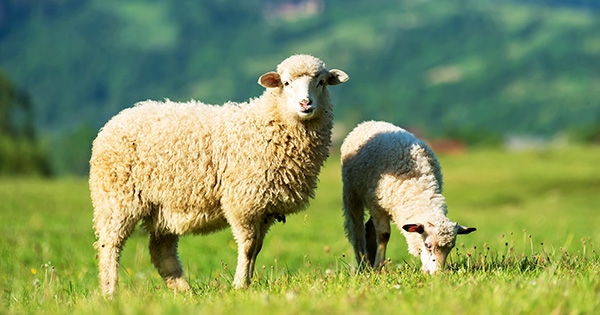27 Aug 2024
Fiona Lovatt warns about the health and financial implications involved in this issue which affects sheep.

Image © byrdyak / Adobe Stock
Annually, blowfly strike costs the UK sheep industry more than £2.2 million1, and with the length of the strike season increasing due to changes in climate conditions, it is a health challenge that should not be overlooked.
Costs associated with blowfly strike include reduced growth rates, as well as reactive treatment and prophylactic control costs, plus worst-case losses due to animal mortality.
The consequences of strike are much more financially crippling than UK farmers think, giving vets a clear role to communicate the true scale of this; for instance, for lowland farmers, a more intensive preventive treatment regime is the most cost-effective solution.
The financial losses caused by blowfly strike go far beyond the cost of treating a struck animal.
It costs an estimated £22 to treat a struck lamb, likely more when including the cost of labour, use of a synthetic pyrethroid (SP) product and overall impact on growth rate2.
But that is just the tip of the iceberg. When considering all cost implications, a study has shown farmers are at risk of losing a total of £209 per lamb and £184 per breeding ewe, where they are not sold at market and replacement ewe-lambs are required2.
With the sheep sector offering minimal profit margins as it is, helping farmers avoid these costs is crucial.
A major cost associated with blowfly strike is increased mortality, with mortality rates of up to 7.5% experienced in struck flocks2.
As with all health issues, the outcome does not always end in mortality, but the associated losses in performance, even if animals do recover, also contributes to the cost of strike.
Flystrike reduces appetite and can cause anaemia or chronic ammonia toxaemia, resulting in weight loss, which ultimately affects the ewe’s body condition score (BCS). Reductions in BCS during the summer months, when flystrike is at its peak, will also directly impact the ewe during tupping.
Studies have shown in circumstances where no preventive treatment has been applied that farmers can expect cases of flystrike in 6% to 12% of ewes and up to 16% of lambs2. These are significant figures with a large knock-on impact on farm profitability.
Use of prophylactic treatments is recommended to prevent blowfly strike and its impact on flock health. In early strike risk areas, it is advisable to apply either a short-lasting insect growth regulator (IGR) or an SP to ewes well before shearing, at a similar time to treating lambs with a longer-acting IGR before significant strike risk occurs.
Shearing will then reduce the strike risk for ewes for a time, but it is recommended to treat with a long-acting IGR to protect them through the humidity of late summer.
A thorough preventive treatment plan is often thought to be a costly route to follow because, understandably, it is an upfront expense.
However, based on the statistics, the losses from not implementing prophylactic treatment are much higher, with preventing flystrike clearly proven to be a much more cost-effective option.
Careful application of preventive treatments will maximise the effectiveness of using these products to control blowfly strike.
It is important to remember that technique matters when it comes to protecting flocks from blowfly strike – an important message to communicate with farmer clients.
The author recommends following manufacturers’ application guidance closely, and to always ensure the correct and full dose rate is used.
Where shortcuts have been taken with application or dose rates, some animals will inevitably be struck as the fly pressure builds towards the end of the summer, meaning the animals suffer and the farmers not only miss out on the benefits of preventive health, but also face further hidden costs.